
Written By: Sofia Layarda, MPH
Title: Master of Public Health
Alumni: University of California, Berkeley
Last Updated on:

More and more of us eat a significant number of our meals in restaurants instead of at home. But making sense of the menu can be tricky in ethnic dining spots, especially when one is unfamiliar with the cuisine. Which terms signal higher-fat choices?
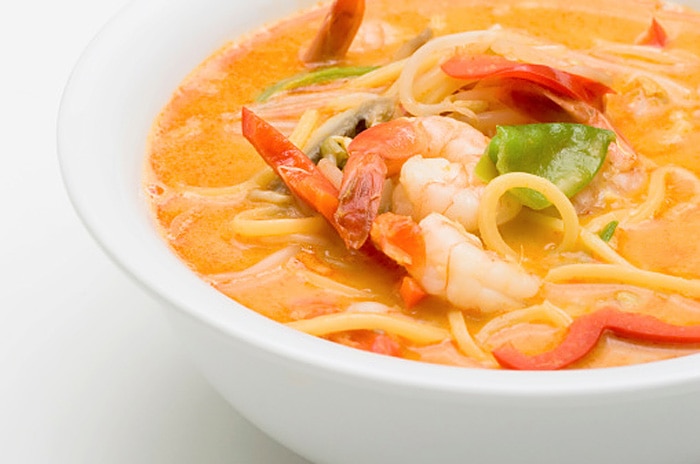
Table of Contents
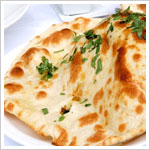 The following menu items are usually deep-fried: samosas, pakoras, papadum. In one of the more famous dishes, chicken tikka masala, the chicken pieces are usually grilled, but are then added to a rich creamy sauce, so it’s the sauce that will do you in on the fat content. Curries in general are also rich in cream or coconut milk, so indulge sparingly. A lower-fat choice is tandoori or tandoor (marinated meat cooked in a special clay oven). Just watch what you dip the meat in.
The following menu items are usually deep-fried: samosas, pakoras, papadum. In one of the more famous dishes, chicken tikka masala, the chicken pieces are usually grilled, but are then added to a rich creamy sauce, so it’s the sauce that will do you in on the fat content. Curries in general are also rich in cream or coconut milk, so indulge sparingly. A lower-fat choice is tandoori or tandoor (marinated meat cooked in a special clay oven). Just watch what you dip the meat in.
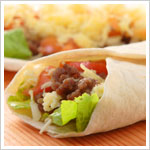 Common deep-fried items on Mexican menus include hard tacos (including taco salads, which tend to have deep-fried taco shell bowls), tortilla chips that come as a side, tostadas, and chimichangas. Opt instead for tamales or burritos that are steamed. Be mindful of portion sizes, even for steamed versions, and be wary of “wet” versions of tamales and burritos that are drowning in heavy sauces.
Common deep-fried items on Mexican menus include hard tacos (including taco salads, which tend to have deep-fried taco shell bowls), tortilla chips that come as a side, tostadas, and chimichangas. Opt instead for tamales or burritos that are steamed. Be mindful of portion sizes, even for steamed versions, and be wary of “wet” versions of tamales and burritos that are drowning in heavy sauces.
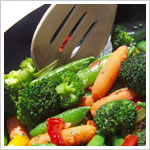 It’s pretty obvious that spring rolls are deep-fried. But did you know that many noodle dishes are also high in fat? Chow mein noodles are pre-fried to begin with, and then more oil has to be added during cooking to prevent the noodles from sticking. “Pan-fried” rice noodle dishes are also high in fat, because so much oil has to be added to keep the pieces slick and separated. Many items with the descriptor “crispy,” and those “with special sauce,” will be high in fat as well. In popular dishes such as sweet and sour pork or chicken, the meat pieces are also battered and deep-fried before the sauce is added. For lower-fat choices, look for sauteed, braised, or steamed items or noodle soups, and ask for any sauces to be served on the side.
It’s pretty obvious that spring rolls are deep-fried. But did you know that many noodle dishes are also high in fat? Chow mein noodles are pre-fried to begin with, and then more oil has to be added during cooking to prevent the noodles from sticking. “Pan-fried” rice noodle dishes are also high in fat, because so much oil has to be added to keep the pieces slick and separated. Many items with the descriptor “crispy,” and those “with special sauce,” will be high in fat as well. In popular dishes such as sweet and sour pork or chicken, the meat pieces are also battered and deep-fried before the sauce is added. For lower-fat choices, look for sauteed, braised, or steamed items or noodle soups, and ask for any sauces to be served on the side.
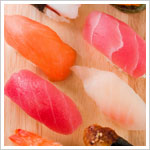 The most well-known term for deep-fried items in Japanese restaurants is tempura. Other items that are often deep-fried include katsu or karaage-style dishes. Yaki soba is pan-fried noodles, which can be quite oily. Safer bets are to request broth-based noodle dishes like ramen and udon, robata or yakitori (grill) items, or just the traditional sushi.
The most well-known term for deep-fried items in Japanese restaurants is tempura. Other items that are often deep-fried include katsu or karaage-style dishes. Yaki soba is pan-fried noodles, which can be quite oily. Safer bets are to request broth-based noodle dishes like ramen and udon, robata or yakitori (grill) items, or just the traditional sushi.
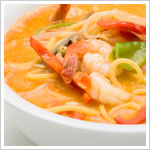 Any dish sporting the term “goreng” or “char” in its name signals either a deep-fried or higher-fat choice. Southeast Asian curries are coconut-milk-based too, so enjoy sparingly.
Any dish sporting the term “goreng” or “char” in its name signals either a deep-fried or higher-fat choice. Southeast Asian curries are coconut-milk-based too, so enjoy sparingly.
While it would be nice to make every meal from scratch, the reality is that many of us rely on takeout or eating out as part of our regular meal rotation. Learn to spot the higher-fat menu choices so you know how best to manage your fat allowance. Another easy way to manage your intake, as suggested by Monica Reinagel in her book Nutrition Diva’s Secrets for A Healthy Diet, is by “working the small plates.” That is, order two or three small appetizers and make that your meal.
Alumni: University of California, Berkeley – Sofia believes in bringing back fun and pleasure into everyday eating. She loves cooking, and is constantly experimenting with ingredients, creating recipes and trying them out on family and friends. Her latest interest lies in finding realistic and practical ways of environmentally-friendly food/eating habits.
healthy dine-out, indian, japanese, laksa, lose that weight, malay, mexican, naan, ramen, singaporean, sushi, taco, thai, udon, world